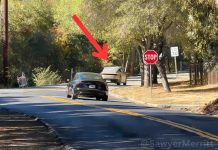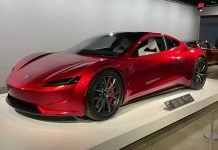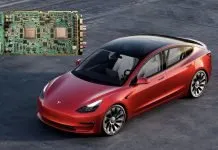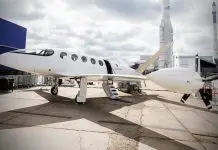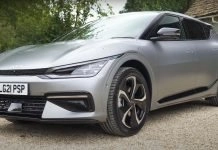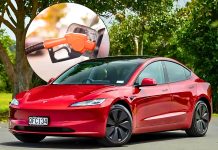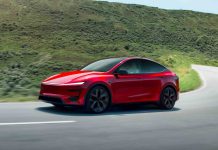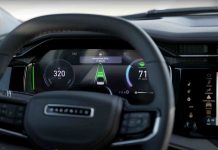Tesla’s upcoming Cybercab was spotted undergoing initial testing on public roads for the first time. It was conducted in Los Altos, California, a mere 10-minute drive from Tesla’s headquarters in Palo Alto. The sighting is a significant milestone, as Tesla is closer to the official launch of its fully autonomous ride-hailing service, which is likely to transform both personal and shared mobility.
Although the Cybercab was seen with someone in the driver’s seat (which is probably due to regulations at this point), it indicates that the Tesla-dedicated Robotaxi platform has entered a new phase of real-world testing.

The Cybercab: Tesla’s Dedicated Robotaxi
The Cybercab is built as an autonomous car, unlike Tesla’s other vehicles, which can be used as personal cars. It will also be the foundation of the upcoming Tesla Robotaxi network, in which customers can request rides via the Tesla app, just like Uber or Lyft, only completely autonomous.
Elon Musk has already talked of the Cybercab as a futuristic, purpose-built car with no steering wheel or pedals, safety-optimal, and cost-effective. It is believed that it will be a minimalist and small design, created with the focus on the comfort of the passengers and autonomous functioning.
The choice of Los Altos for testing is no surprise. It is located near Tesla’s engineering facilities, and the area offers the perfect setting for early tests, as Tesla engineers will be able to observe and analyze the Cybercab’s performance on the road. Also, the presence of a safety driver suggests Tesla is still collecting validation data and complying with California’s strict autonomous vehicle testing regulations.
A Glimpse Into the Future of Transportation
The Cybercab is one of the major elements of Elon Musk’s long-term vision to design a full-fledged autonomous ride-hailing experience, which is based on the Full Self-Driving (FSD) technology by Tesla. Musk has reiterated a number of times that the methodology employed by Tesla of sharing the same hardware suite and software stack across vehicles will enable the company to scale more quickly than other vehicles in the market, like Waymo or Cruise.
Tesla is ready to roll out the Cybercab fleet to big cities once the regulations allow it to provide an affordable and convenient alternative to taxis that are driven by human drivers. Even Musk has hinted that Tesla owners at some point in the future will be able to add their cars to the network, thereby gaining passive income when their cars are not being used.
Challenges Ahead
Despite this promising development, Tesla has a number of challenges to overcome. Self-driving laws differ in different states, and it will take a long time to ensure that driverless technologies are fully approved in terms of safety. Also, the other competitors, such as Waymo, are already running fleets of robotaxis, which implies that Tesla does not only have to provide innovation but also reliability and safety on scale.
However, the initial introduction of the Cybercab into the streets shows that the autonomous dream of Tesla is already under implementation – and, possibly, not as far as many might have assumed.

